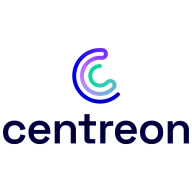

Nmap and Centreon provide solutions in network management. Although Nmap is more accessible with its pricing, Centreon has a stronger standing due to its comprehensive features.
Features: Nmap provides powerful network scanning, precise network device detection, and efficient identification of open ports and services. Centreon offers detailed performance monitoring, alerts, and customizable dashboards for analyzing IT environments.
Room for Improvement: Nmap could enhance its user interface, add more robust reporting capabilities, and support advanced network configuration options. Centreon might simplify its deployment process, improve integration with third-party tools, and offer more competitive pricing options for smaller businesses.
Ease of Deployment and Customer Service: Nmap features a straightforward deployment process due to its command-line interface and detailed documentation. Centreon's deployment can be complex, but they provide strong support options to assist users.
Pricing and ROI: Nmap is cost-effective as an open-source tool, offering substantial value at no initial cost. It ensures ROI by improving network security without financial strain. Centreon requires a higher initial investment, but it justifies the cost with its extensive monitoring features and long-term productivity benefits.
| Product | Market Share (%) |
|---|---|
| Nmap | 0.6% |
| Centreon | 2.2% |
| Other | 97.2% |


| Company Size | Count |
|---|---|
| Small Business | 11 |
| Midsize Enterprise | 5 |
| Large Enterprise | 14 |
| Company Size | Count |
|---|---|
| Small Business | 9 |
| Midsize Enterprise | 1 |
| Large Enterprise | 11 |
Centreon is an all-in-one IT monitoring solution that is a network, system, applicative supervision, and monitoring tool. It is free and open source, and one of the most flexible and powerful monitoring softwares on the market.
Centreon Features
Centreon has many valuable key features. Some of the most useful ones include:
Centreon Benefits
There are several benefits to implementing Centreon. Some of the biggest advantages the solution offers include:
Reviews from Real Users
Below are some reviews and helpful feedback written by Centreon users.
PeerSpot user Thor M., CEO at a tech services company, says, "The single-pane view provides us a view of all of our network infrastructure, and it is one of the most important tools that we use to see the status of our customers' networks. It provides a nice benefit when it comes to helping align IT operations with business objectives. The top-down views, dashboards, and business context reporting are things that are nice to have because you want to be able to show the customer that everything is working, that problems have been addressed, and that you're providing value.”
Thomas C., Managing Director, Canada at Eva, comments, “The most valuable feature of the solution is the flexibility, the ability to integrate all kinds of equipment. As long as something has an IP you can monitor it. What we try to achieve all the time is not only saying a company's system is available, but to give additional data on the performance of the equipment. So the flexibility is what matters the most to us, where we can script everything. Centreon has a lot of Plugin Packs, meaning they support, by design, a lot of devices. And on top of that, we have the ability to add our own scripts and do whatever we want and display the data as we want in the central dashboards.”
Marcilio L., President at ITS Solucoes, expresses, "The dashboards are valuable because they ease troubleshooting and viewing. It becomes easier to locate the source of a problem... The dashboards make it easier to communicate with our clients. They don't want to see the alert console, they want to see a beautiful dashboard representing their network and their business and to watch it in case something is wrong in their environment."
Florent Q., Network Engineer at a computer software company, mentions, "The most valuable feature is that we can manually configure everything we need. After it comes inside the interface of Centreon, you can display it. Because the interface is quite user-friendly, you can manually configure the configuration very deeply, which is very pleasant and useful because you can monitor and see everything on your service list, dashboard, or MAP. The most useful feature for me is that you can create your own plugin and monitoring query."
Nmap ("Network Mapper") is a free and open source (license) utility for network discovery and security auditing. Many systems and network administrators also find it useful for tasks such as network inventory, managing service upgrade schedules, and monitoring host or service uptime. Nmap uses raw IP packets in novel ways to determine what hosts are available on the network, what services (application name and version) those hosts are offering, what operating systems (and OS versions) they are running, what type of packet filters/firewalls are in use, and dozens of other characteristics. It was designed to rapidly scan large networks, but works fine against single hosts. Nmap runs on all major computer operating systems, and official binary packages are available for Linux, Windows, and Mac OS X. In addition to the classic command-line Nmap executable, the Nmap suite includes an advanced GUI and results viewer (Zenmap), a flexible data transfer, redirection, and debugging tool (Ncat), a utility for comparing scan results (Ndiff), and a packet generation and response analysis tool (Nping).
We monitor all Network Monitoring Software reviews to prevent fraudulent reviews and keep review quality high. We do not post reviews by company employees or direct competitors. We validate each review for authenticity via cross-reference with LinkedIn, and personal follow-up with the reviewer when necessary.